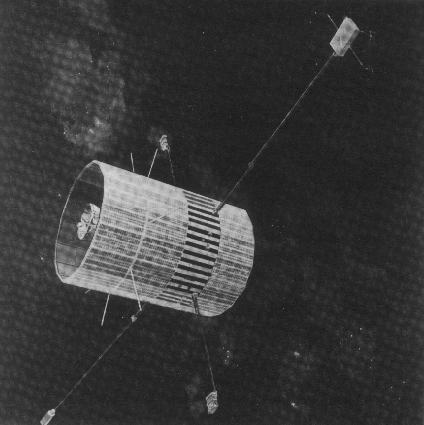International Monitoring Platform Series

The IMP 6 satellite. (Credit: NASA)

The IMP 7 satellite. (Credit: NASA)
The International Monitoring Platform satellites, or IMP for short, were launched to study the interplanetary and magnetotail regions around Earth. The payloads of both IMP 6 and IMP 7 included a gamma-ray monitor which turned out to be sensitive to gamma-ray bursts.
Lifetime: November 1963 (first launch, IMP 1) - October 2008 (last satellite, IMP 8, sends its last data to Earth)
Country (primary): United States
IMP 6 (Explorer-43)
Lifetime: March 1971 - October 1974
Primary Science
The primary science of IMP 6 was to monitor cosmic rays, solar winds, radio waves and magnetic fields in space.
Science Highlights
- Gathered spectra for six gamma-ray bursts, confirming their hard X-ray/gamma-ray nature of the bursts.
Links to more information
IMP 7 (Explorer-47)
Lifetime: September 1972 - October 1978
Primary Science
The primary science objectives of IMP 7 was to study the origin of cosmic rays and measure changes in the Earth's magnetic tail as it is affected by the solar wind.
Science Highlights
- Recorded data for nine confirmed gamma-ray bursts. The photon number spectrum for the 100-110 keV energy range were all statistically consisted with being the same shape.


